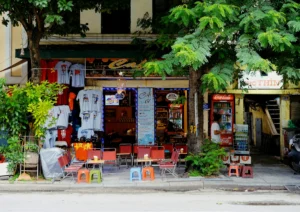Laos, a landlocked country in Southeast Asia, is renowned for its breathtaking natural beauty. From lush forests and majestic mountains to serene rivers and stunning waterfalls, Laos offers a diverse landscape that captivates and enchants visitors. The country’s commitment to preserving its natural heritage ensures that these pristine environments remain unspoiled for future generations to explore and enjoy.
Majestic Mountains and Karst Formations
The Annamite Range
The Annamite Range, stretching along the eastern border of Laos, forms a natural barrier with Vietnam. These mountains are home to dense forests and a wealth of biodiversity, including many endemic species. Trekking through the Annamite Range offers adventurers the chance to encounter rare wildlife and experience the rugged beauty of Laos’ highlands.
The Limestone Karsts of Vang Vieng
Vang Vieng is famous for its dramatic limestone karst formations, which rise abruptly from the surrounding landscape. These karsts create a picturesque backdrop for outdoor activities such as rock climbing, caving, and tubing along the Nam Song River. The Tham Chang Cave, with its stalactites and stalagmites, is a must-visit attraction in this area.
Rivers and Waterfalls: The Lifeblood of Laos
The Mighty Mekong River
The Mekong River is the lifeblood of Laos, flowing through the country from north to south. It supports local agriculture, provides transportation routes, and sustains diverse ecosystems. Along the river, visitors can embark on boat tours, witnessing traditional fishing practices and exploring remote villages that rely on the Mekong for their livelihood.
Kuang Si Falls: A Natural Paradise
Located near Luang Prabang, Kuang Si Falls is one of Laos’ most iconic natural attractions. This multi-tiered waterfall cascades into turquoise pools, creating a picturesque setting perfect for swimming and relaxation. Surrounding the falls is a lush forest with well-marked trails, offering opportunities for hiking and wildlife spotting.
Protected Areas and National Parks
Nam Et-Phou Louey National Park
Nam Et-Phou Louey National Park is the largest protected area in Laos, encompassing a diverse range of habitats from lowland forests to alpine meadows. This park is a haven for wildlife, including tigers, Asian elephants, and gibbons. Guided eco-tours provide visitors with a chance to learn about conservation efforts and experience the park’s natural beauty firsthand.

Phou Khao Khouay National Park
Located close to Vientiane, Phou Khao Khouay National Park is known for its stunning landscapes and rich biodiversity. The park features waterfalls, rivers, and a variety of wildlife, including the rare green peafowl. Visitors can enjoy trekking, bird watching, and exploring the park’s diverse flora and fauna.
Cultural and Natural Fusion
The Plain of Jars
The Plain of Jars is a unique archaeological site located in the Xieng Khouang plateau. Scattered across the landscape are thousands of large stone jars, whose origins and purpose remain a mystery. This UNESCO World Heritage site combines natural beauty with historical intrigue, offering a fascinating glimpse into Laos’ ancient past.
Luang Prabang: A UNESCO World Heritage Site
The town of Luang Prabang is renowned for its well-preserved architectural, cultural, and religious heritage. Nestled at the confluence of the Mekong and Nam Khan rivers, Luang Prabang is surrounded by mountains and lush greenery. The town’s numerous temples, colonial buildings, and vibrant night markets make it a cultural and natural gem.
Adventure and Eco-Tourism
Gibbon Experience
The Gibbon Experience in Bokeo Nature Reserve offers a unique adventure through Laos’ tropical rainforest. Participants traverse the forest canopy via zip-lines and stay in treehouses high above the ground. This eco-tourism project supports conservation efforts while providing thrilling experiences and opportunities to spot the elusive black gibbon.
Nam Ha National Protected Area
Nam Ha National Protected Area in northern Laos is a hotspot for eco-tourism and adventure activities. Visitors can engage in trekking, kayaking, and cultural exchanges with local ethnic communities. The area is rich in biodiversity, with dense forests, rivers, and wildlife that make for an unforgettable wilderness experience.


